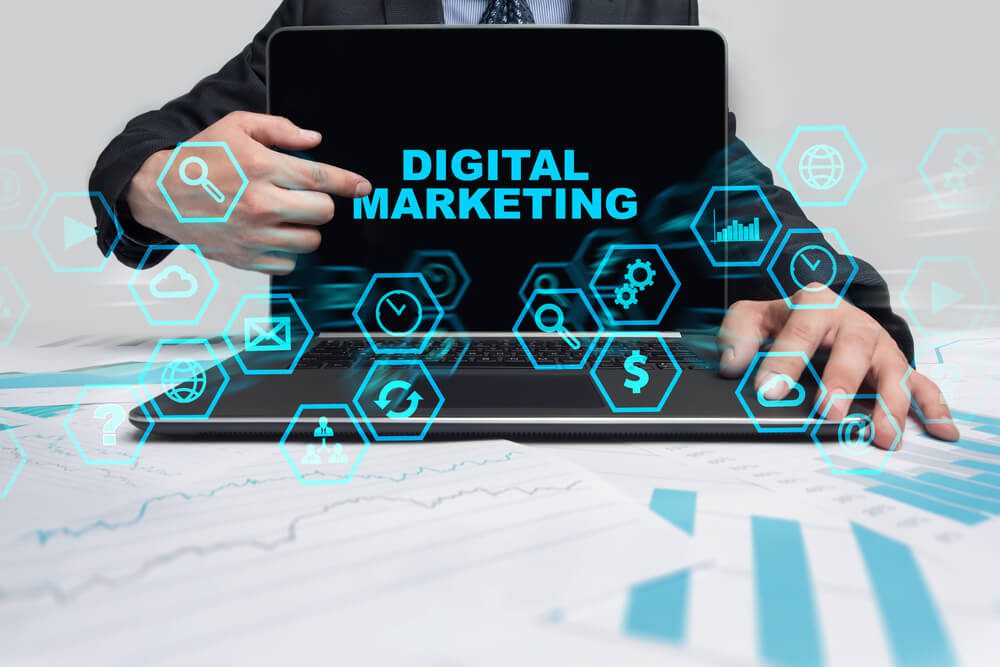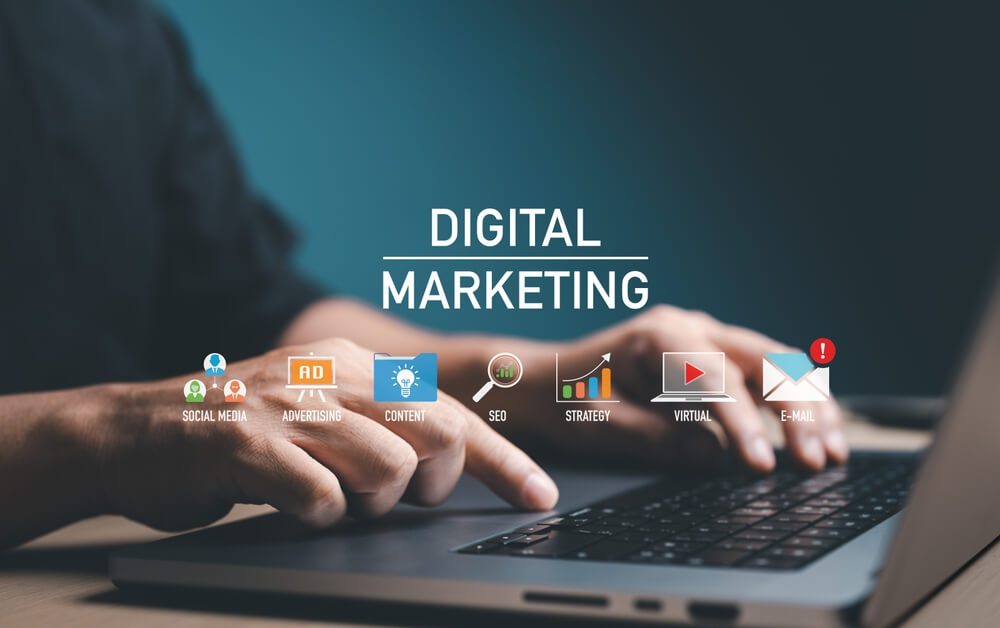
Navigating the New Normal: Digital Marketing Tips for Professional Services in a Post-Pandemic World
The post-COVID-19 era shifted consumer mindsets and priorities. Is your business adapting?
If the answer is “hardly” or “no,” work with a fractional CMO for professional services. This cost-effective marketing expert provides strategic guidance for sustainable growth, especially during uncertain periods.
This article delves more deeply into that topic and makes these essential points:
 Who are the “new normal” consumers? They share the following attributes:
Who are the “new normal” consumers? They share the following attributes:
 You might not be as big as Uber or any other popular brand. You might even be bootstrapping a startup. Regardless of your business stage and size, you need a strong online presence to build relationships with new-normal consumers.
Follow these seven digital marketing strategies a reliable SEO agency can provide:
You might not be as big as Uber or any other popular brand. You might even be bootstrapping a startup. Regardless of your business stage and size, you need a strong online presence to build relationships with new-normal consumers.
Follow these seven digital marketing strategies a reliable SEO agency can provide:
 As more consumers demand an omnichannel experience, professional services should embrace e-commerce. Such businesses can use it to achieve the following:
As more consumers demand an omnichannel experience, professional services should embrace e-commerce. Such businesses can use it to achieve the following:
- Understanding the “new normal” consumers
- The importance of data analytics at this time
- How to refine time-tested online marketing strategies to align with the post-COVID era
Want to know how to get a Chief Marketing Officer for your Professional Services Organization without the cost of a full-time employee? Watch this video to find out!
Understanding the Post-Pandemic Consumer
 Who are the “new normal” consumers? They share the following attributes:
Who are the “new normal” consumers? They share the following attributes:
- Back to the “old normal” up to a certain extent
- Engaged in cautious spending
- Growing markets for omnichannel experiences
- Possess the data fluency to identify accurate, timely sources and derive actionable objectives.
- Avoid relying on intuition.
- Ground recommendations and messaging in up-to-date information.
- Continuously adapt strategies based on these real-time inputs.
- Expand its offerings from grocery to package and prescription delivery
- Reinforce its value during inflation with rewards programs and promotions
- Integrate its ridesharing and delivery services into one seamless on-demand experience via a unified app
Seven Digital Marketing Tips To Strengthen Your Online Presence
 You might not be as big as Uber or any other popular brand. You might even be bootstrapping a startup. Regardless of your business stage and size, you need a strong online presence to build relationships with new-normal consumers.
Follow these seven digital marketing strategies a reliable SEO agency can provide:
You might not be as big as Uber or any other popular brand. You might even be bootstrapping a startup. Regardless of your business stage and size, you need a strong online presence to build relationships with new-normal consumers.
Follow these seven digital marketing strategies a reliable SEO agency can provide:
1. Revamp Your Website and Strengthen Your Social Media Presence
As consumer behaviors continue to shift since the pandemic, professional services firms should reevaluate digital touchpoints, especially websites and social media. The goal is to provide seamless, personalized user experiences. For websites, fractional CMOs help businesses identify pain points through analytics to guide refinements. For example, an accounting firm might highlight virtual consultation options or DIY tax resources. Other options include the following:- Enhanced navigation
- Self-service features, such as chatbots
- Speed optimization
2. Craft Content That Resonates with the New-Normal Consumers
Consumers are inundated with articles and ads throughout each and every day. How do you capture some of their time and grab their undivided attention? Combine interactive content with authentic storytelling. Dove’s Real Beauty Sketches is one fine example. Launched in 2013, the video featured an emotional narrative highlighting the self-perception gap: women see themselves in a more critical light than others view them. Conveying this poignant insight aligned with Dove’s brand purpose of promoting “real beauty.” It deeply resonated with the target audience because the marketing tactic pivoted from the product to the consumer. It was also a massive success from a business standpoint. It generated a strong positive reaction across social media, and mainstream news eventually featured it. The ad also changed people’s perspectives on the brand, making them view it as more feminine than before. You can take a page from Dove’s playbook and use videos to tell emotional stories that embody your values, share your purpose, and connect more deeply with today’s consumers. If you are an accounting firm, content marketing services can design an engaging plan such as this:- A quiz that helps business owners assess their current accounting and financial management practices, with customized recommendations provided on the basis of their responses
- A choose-your-own-adventure video that shows the consequences of different financial decisions
- An interactive calculator that allows users to input their business details and get a customized estimate of potential tax savings from working with the firm
- A simulated “day in the life” video that shows common financial scenarios
- An interactive guide to navigating key accounting issues
- Social media series such as “Ask Our Experts”
3. Use Technology to Personalize and Automate Digital Marketing
Leveraging technology helps brands deliver more tailored, engaging experiences while optimizing marketing workflows. Personalization allows businesses to match content based on what their users need. In the process, ads and blogs become more relevant, helpful, and important. For example, a fractional CMO for professional services supports a consulting firm’s targeted account-based marketing approaches. They use prospect data to deliver more suitable content, such as relevant case studies, event invitations, and special offers. Meanwhile, marketing automation improves operational efficiency and high-value strategic work. Common marketing automation use cases include the following:- Triggered emails and notifications based on certain user actions
- Dynamic ad targeting and bidding based on real-time data
- Automated social media posting and audience segmentation
- Artificial intelligence (AI)-powered chatbots for customer service
- Predictive lead scoring to identify sales prospects
4. Engage the Audience with Virtual Events and Webinars
Virtual events, including webinars, are the next big thing in digital marketing. Its market size could achieve a compound annual growth rate (CAGR) of 18.8% until 2032. By the end of the forecast period, it would be a trillion-dollar industry. These new-normal interactions appeal to both consumers and businesses for the following reasons:- They are cost-effective. The audience does not need to buy tickets or book accommodations. Companies can avoid paying for large venues.
- You can design more agile events. Users can choose their preferred time and view videos on demand.
- This strategy supports other online marketing initiatives. It is a great demand generation tool. It allows businesses to collect information, such as emails, for lead nurturing.
- It is engaging. Participants can ask questions, answer polls, or chat with others.
- It elevates the brand’s value. Virtual events, such as webinars, can effectively showcase your expertise as face-to-face workshops.
- Pick the right speaker. Remember that this person directly or indirectly reflects your brand’s values.
- Keep it short. If it is a full-day event, break the talks down into different periods. Allow participants to sign up for their preferred talks.
- Promote extensively across digital channels. Use email, social media, PR, and paid advertising to encourage registration and drive sign-ups.
- Have clear goals and calls to action. Do you want to increase the mailing list? Entice the participants to leave their email addresses to receive the webinar’s recorded version or more workbooks.
5. Leverage Other People’s Marketing Influence
The COVID-19 pandemic substantially increased the demand for authenticity in branding. This is because it reduces uncertainty and provides psychological security in threatening situations. Professional services can still be vulnerable, even when promoted online. One option to consider is influencer marketing:- The most effective influencers lend credibility through honest, real-life reviews and organic product promotion.
- User-generated content feels more realistic than polished video production.
- Behind-the-scenes and other transparent influencer content make the business more relatable to the audience.
- Values-aligned partnerships convey what a brand genuinely stands for.
- Partner with patient influencers, preferably those already vocal about their care experience.
- Give behind-the-scenes access to showcase new technologies and facility upgrades through Instagram Stories.
- Collaborate with an influencer to organize a community 5k promoting active lifestyles.
- Work with physician influencers to co-create informative healthcare content, such as live Q&As or tutorials.
6. Decide Based on Data
The COVID-19 pandemic changed the meaning of organizational agility. Pre-pandemic, it was an iterative marketing process to carry out long-term, fixed strategic plans. In the new normal, agility became associated with responding dynamically to unforeseen situations rather than sustaining predefined plans. Specifically, the pandemic highlighted how agility could become a cost-effective approach to help businesses withstand and recover from unexpected PR crises. Agile companies rapidly pivot their messaging, advertising channels, and budget allocations. This nimbleness lessens the impact of disruptions on operations and branding. A huge part of the transformation is data, which guides most companies’ decision-making today:- Leveraging analytics on consumer behavior, market trends, and competition allows brands to detect shifts immediately.
- Consumer research and feedback guide marketers when modifying strategies.
Data Analytics in Action
Airbnb was one of the brands that used data to react swiftly and thrive even after the pandemic. First, it exercised empathy by displaying banner warnings about COVID risks. It also emphasized its commitment to keeping travelers safe. Then, it adapted and innovated. Airbnb has made Online Experiences its primary product. Instead of booking accommodations, customers sign up for various activities they can do at home. These ranged from cooking classes to virtual walking tours. As travel restrictions eased, the company paid more attention to consumer shifts. For example, it recently launched the Live and Work Anywhere initiative to develop a more seamless infrastructure for the growing digital nomad market.7. Manage Your Reputation
The COVID-19 pandemic has greatly amplified existing consumer skepticism toward brands. Throughout the crisis, companies struggled to respond to massive disruptions. These included supply-chain breakdowns, haphazard health policies, and a lack of empathy. This problem and rapid consumer sentiment shifts make monitoring online customer reviews more vital. Companies cannot afford for a scathing review to go viral and damage their reputation. They also need more reliable data to notice changes in people’s brand perceptions. Here are some of the most sensible crisis management and reputation protection strategies for brands today:- Monitor sentiment metrics and listen to data closely to detect emerging issues proactively.
- Demonstrate authentic empathy, understanding, and compassion in all customer communications.
- Leverage influencer partners and employees as credible voices to humanize and add trust to crisis messaging.
- If mistakes occur, acknowledge them openly rather than deflecting them. Take ownership and offer sincere apologies.
- Provide regular updates on resolution progress rather than being silent, even if the news is mixed.
- Overdeliver when reinforcing goodwill, such as with generous refunds.
- After crises, develop strategies to prevent repeat issues.
Optimize Your E-commerce Strategies
 As more consumers demand an omnichannel experience, professional services should embrace e-commerce. Such businesses can use it to achieve the following:
As more consumers demand an omnichannel experience, professional services should embrace e-commerce. Such businesses can use it to achieve the following:
- Seamlessly integrate virtual and in-person marketing strategies.
- Meet heightened expectations for self-service access and on-demand purchasing.
- Offer tiered services to align with more cautious spending.
- Provide personalized recommendations based on online behavior data.
- Build trust and credibility through social proof, such as reviews and ratings.
- Enable hybrid engagement with scaled digital delivery.
- Add more income streams.
- Increase customer or client retention.
- Online applications provide DIY tax preparation, accounting, invoicing, and payroll capabilities.
- AI-powered recommendations suggest products or features to meet specific user needs.
- The platform lets users connect with dedicated accountants or bookkeepers for personalized QuickBooks assistance.
- Clients can book virtual consultation appointments.
- Physical Intuit Pros advisor locations offer in-person support.
- Events such as QuickBooks Connect blend virtual attendees with live expert sessions.
- Omnichannel journeys move users from DIY access to human expert guidance.
- Design data-driven lead-nurturing journeys
- Build referral programs incentivizing clients
Need More Digital Marketing Tips for Professional Services?
If you are a professional services firm, it will be challenging to embrace an omnichannel marketing approach while offering reasonably priced products to clients. Following these tips will help you ease into the new normal cost-effectively and build a more sustainable, agile brand. Digital Authority Partners (DAP) is also an expert fractional CMO for professional services. Our years of experience allow us to better equip you with tools and strategies during volatile periods. Contact us today for a free consultation.Want To Meet Our Expert Team?
Book a meeting directly here



